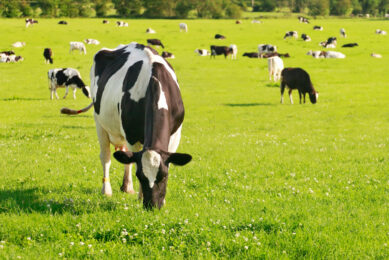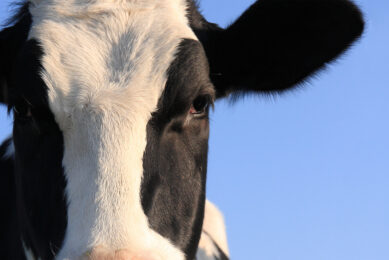How do dairy breeds perform on pasture?
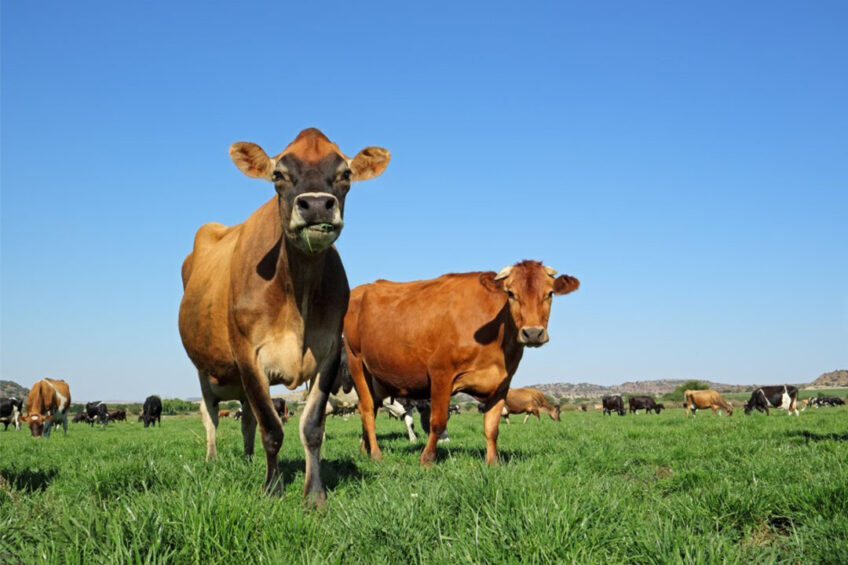
A look at the latest findings on which breeds perform best on pasture as average global temperatures rise and the number of extreme heat days increases.
Global warming is a big worry for dairy farmers around the world, and there is therefore increased interest in which cow breeds perform better with pasture-based systems. These types of dairying are very common in countries such as New Zealand and Ireland, but are also used in many other parts of the world, including other European countries, Canada and the US.
…genetic performance on pasture is receiving more and more attention…
It’s true that nutrition can play a role in helping cows withstand heat stress, but genetic performance on pasture is receiving more and more attention. And while there may not be extensive research on the differences between cattle breeds for pasture performance, Ted Probert, retired extension dairy specialist with the University of Missouri, notes that these differences are quite evident in practice.
In an extension article, Probert explains, however, “No single ideal pasture-based cow exists. Dairies that use grazing do so differently, and therefore the ideal cow will not be the same for all dairies.”
Looking back over the decades in terms of genetic progress, Probert observes that milk yield of individual cows has been a high-priority breeding trait in the US dairy industry. That focus has led to a slip in reproductive efficiency over the years (a lengthening of the average calving interval). Probert explains that in pasture-based systems, particularly seasonal dairies that use “batch” or “window” calving, lowered reproduction efficiency can be a major problem.
“In these systems, it is imperative that a high percentage of cows in the herd return to oestrous cyclicity and breed back within a time that will keep them on the desired seasonal calving schedule,” he says.
Jerseys are among the dairy breeds that offer a shorter calving interval, but Jerseys and their related cousins are also small, and smaller animals can generally dissipate heat better than larger ones (in the case of cows, the Holstein). Their pasture performance is therefore superior.
Probert adds that smaller (less heavy) cows also tend to do less damage to pasture, especially during wetter weather. In addition, Jerseys and other similar breeds sport lighter coat colours, which do not absorb sunlight to the same extent as darker coats, keeping the cow much cooler.
The Jersey – number one?
Jerseys were developed on the British Channel Island of Jersey. The Jersey is a small cow with a lighter brown coat and white markings. The number of Jersey herds has greatly increased in Canada and the US in recent years due to their pasture performance, higher milk fat and protein percentages (ideal for cheese making), shorter calving lengths, ease of calving and other factors. It’s also a highly-productive breed, with some cows giving over 10 times their own weight in milk per lactation.
Probert reports that in Missouri, which has a long pasture season from March to early December, pasture-based dairy herds are made up of about 10% Jersey, with some Guernsey and Brown Swiss herds. But the vast majority (80-90%) of dairy cattle out on pasture in Missouri are Jersey-Holstein crosses.
Crossbred dairy cattle
In a recent master’s thesis completed at the University of North Carolina, Jason Graham assessed crossbred dairy cattle for heat tolerance in pasture-based systems. He writes that most breeding for heat tolerance has focused on purebreds of various breeds, and while crossbreeding of dairy cattle in the US is still not common, “interest is growing due to a rise in organic and pasture-based dairy systems”.
Graham analysed crossbred performance in a pasture-based system in terms of resistance to predicted losses due to heat stress. He found that first-generation (F1) Holstein-Jersey crosses, particularly those with Jersey dams, were “as competitive with the purebred Holstein animals for production yield traits”.
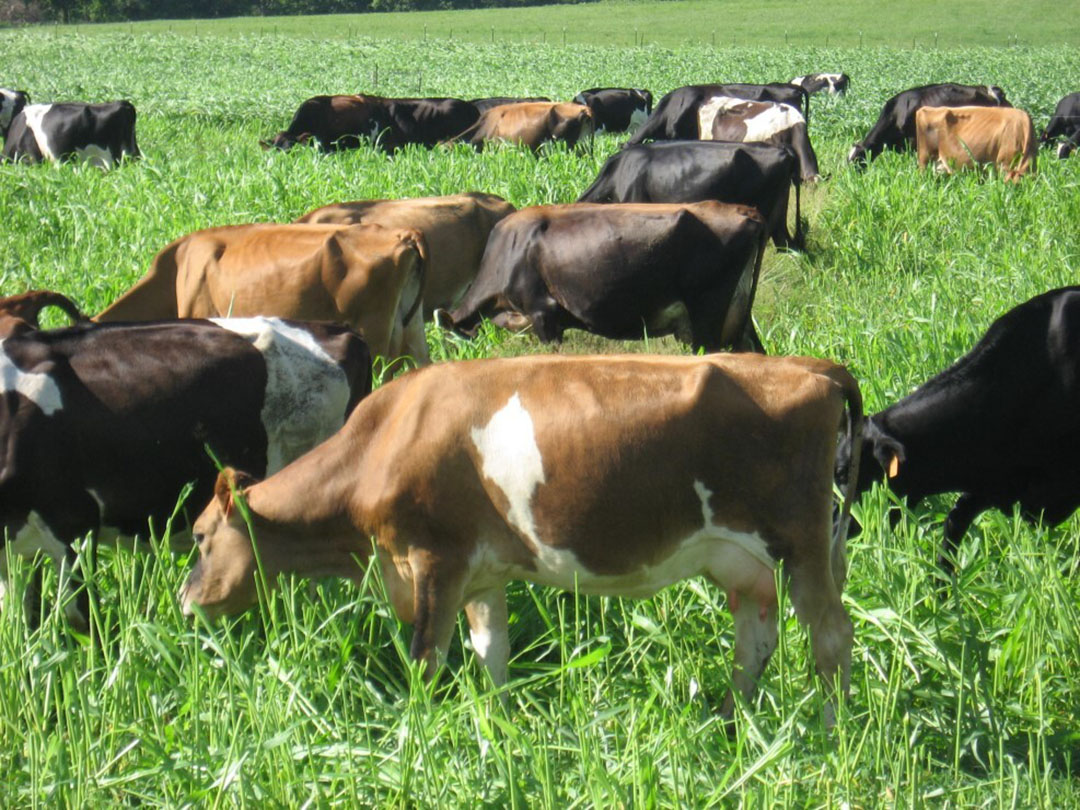
Probert has a warning, however, about F1 Jersey-Holstein progeny. “They are going to be pretty dark in coat colour, which absorbs more heat. But overall, I think a lot of producers in this state would agree that crosses are best in terms of performance on pasture. Jerseys would be second, and then Guernsey and Brown Swiss.”
Guernsey
Like the Jersey, the Guernsey is a smaller cow that was also developed on the British Channel Islands (as was the Alderney breed, which is now extinct). Guernsey milk is high in milk solids and has a distinctive golden colour, resulting from its unusually high content of beta carotene (a nutrient also found in fruit and in vegetables such as carrots).
The World Guernsey Cattle Federation states that this cow “has been developed for pasture-based milk production” and “is the ideal cow for intensive grazing”.
Brown Swiss
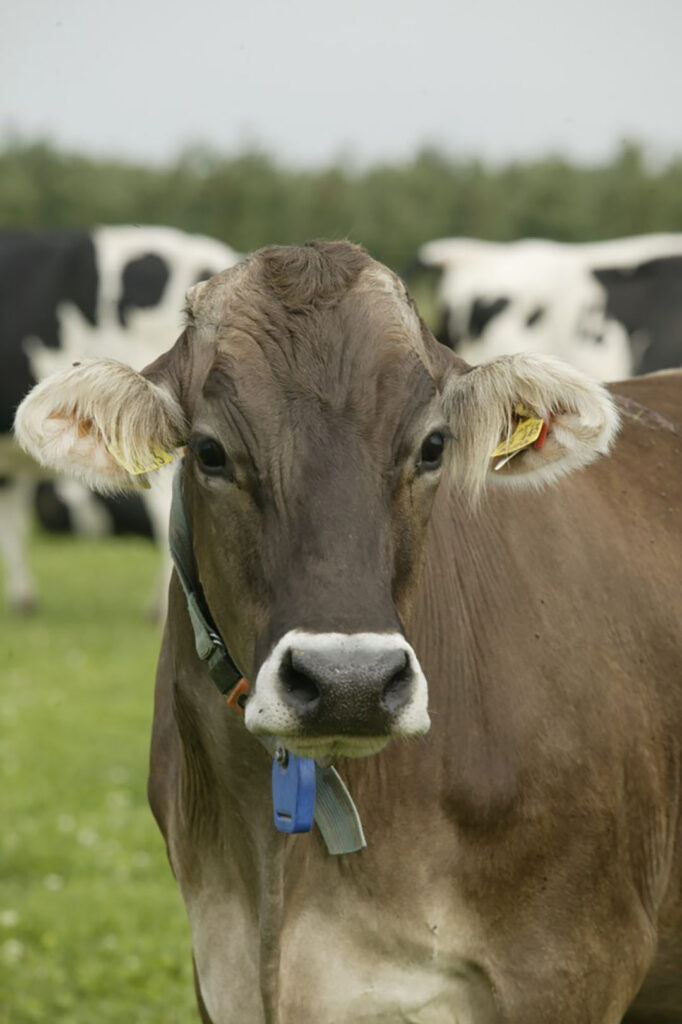
A larger breed, and perhaps the oldest of all dairy breeds, is the Brown Swiss. It is believed to have originated in the valleys and mountain slopes of Switzerland around 4000 BCE. Its milk yields are second highest to the Holstein, and the milk has a butterfat:protein ratio that results in excellent cheeses. Exact figures are hard to come by, but according to the Brown Swiss Association of the US, the cow breed with the largest global population is either Brown Swiss or Holstein.
Ayrshires
Ayrshires are another smaller breed. They originated from the mountainous regions of Ayr county in Scotland, but some historians believe the breed originated in the Netherlands. The Ayrshire developed its red and white characteristics around the year 1800. Ayrshire Canada’s ‘National Fieldman’ Yves Charpentier says, “A good number of Canadian Ayrshire breeders are using pastures for the management of their herds and they obtain very good performances and results.” Ayrshire animals can also pasture well on hilly terrain, as their ancestors did.
Charpentier says it’s also very rare to see an Ayrshire cow with a hoof or leg problem. “They are aggressive grass consumers,” he says, “and, combined with their good mobility, this means the Ayrshire cows are able to feed on a large volume day after day on pastures.”
He adds that Ayrshires need a significant volume of protein in their ration. “Since – especially at the beginning of the grass season (May and June) – pastures represent an excellent source of protein, that increases milk production performance of Ayrshire cows.”
The Canadienne
Although hard data is unavailable, it’s well known that the only breed of dairy cattle ever developed in Canada, the Canadienne, does very well on pasture. While numbers of this breed are currently critically low, the Canadienne was the most common dairy cow in Canada about 150 years ago.
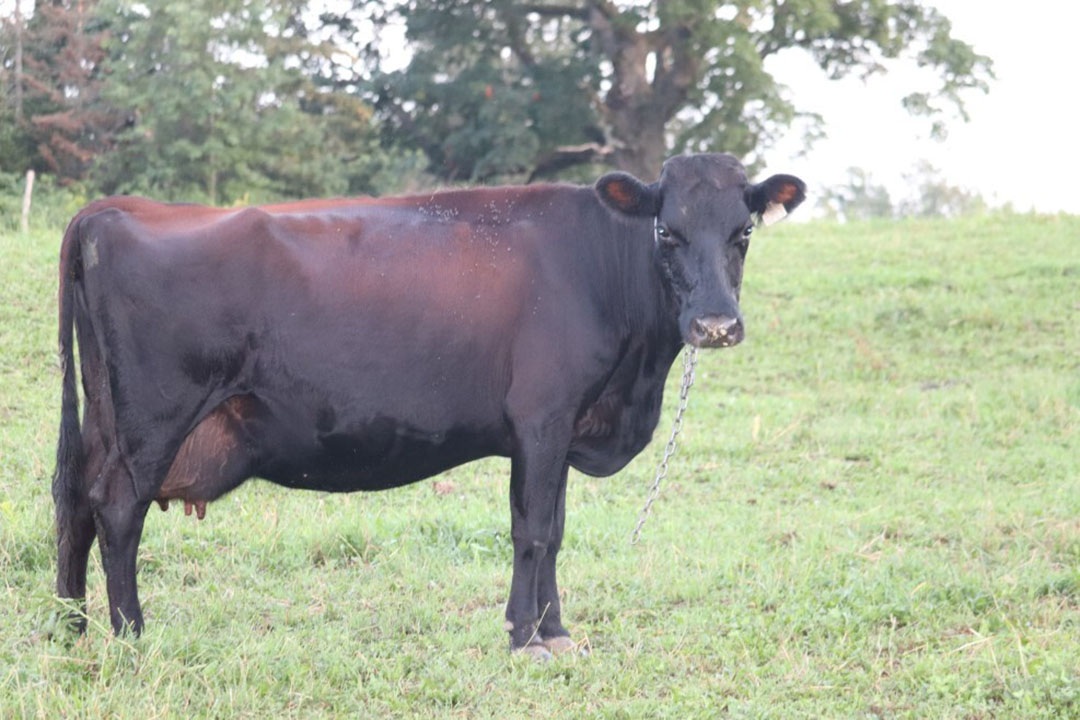
The Canadienne’s ancestors arrived in 1608 from France. Although their common coat colour is black (with some brown to russet also present), they perform well on pasture – in fact, they were bred specifically to do well on rough terrain, according to Mario Duschesne, co-ordinator of the Quebec-based Société des Éleveurs de Bovins Canadiens. Their milk production is not high, as Duschesne explains. “If you select for more production, you will sacrifice hardiness. They are inversely proportional.”
There are about 3 all-Canadienne commercial dairy farms in Quebec, each with a milking herd of about 65 cows. All have a small cheese processing factory of their own or sell directly to a cheese producer. There is also a smaller Quebec Canadienne organic herd, and a few other farms with some of the breed. A few Canadienne also live in other parts of Canada, and there are a few in France.
Holstein
While Holsteins are the top milk-producing cattle breed in the world, their large size and black spots are an impediment to outstanding pasture performance. Generally, they are considered the worst pasture performers of all dairy cows. However, Probert notes in his article that New Zealand Friesians, which were closely related to the conventional Holsteins (full name Holstein Friesians) found worldwide, have undergone generations of selection in an environment that stresses low inputs, low levels of concentrate feeding and seasonal calving.
“These cows are smaller and tend to gain body condition more easily than their US counterparts. They also have good reproductive performance. These attributes have increased interest in the use of New Zealand genetics in domestic pasture-based herds. However, milk marketing realities in New Zealand have led to selection for milk solids content and against fluid volume. This factor should be considered when deciding whether to use New Zealand genetics for a breeding programme. In general, New Zealand genetics would best be used by seasonal, low-input operations or in component markets.”
However, Holstein genetics are now changing on a global scale due to one particular gene…
The Holstein “slick gene”
The “slick gene”, as it’s known, allows cows with the gene to better handle heat through short and sleek hair that’s sometimes glossy. According to Stephanie Rodriguez, marketing co-ordinator at Florida-based genetics company FutureCow, this gene has been studied for decades. “The slick phenotype was originally described in the US by Tim Olson and collaborators in Senepol cattle that originated in the Caribbean Island of St. Croix and was inherited as a single and very dominant gene,” she explains. “Since then, the slick locus has even been mapped on bovine chromosome 20.”
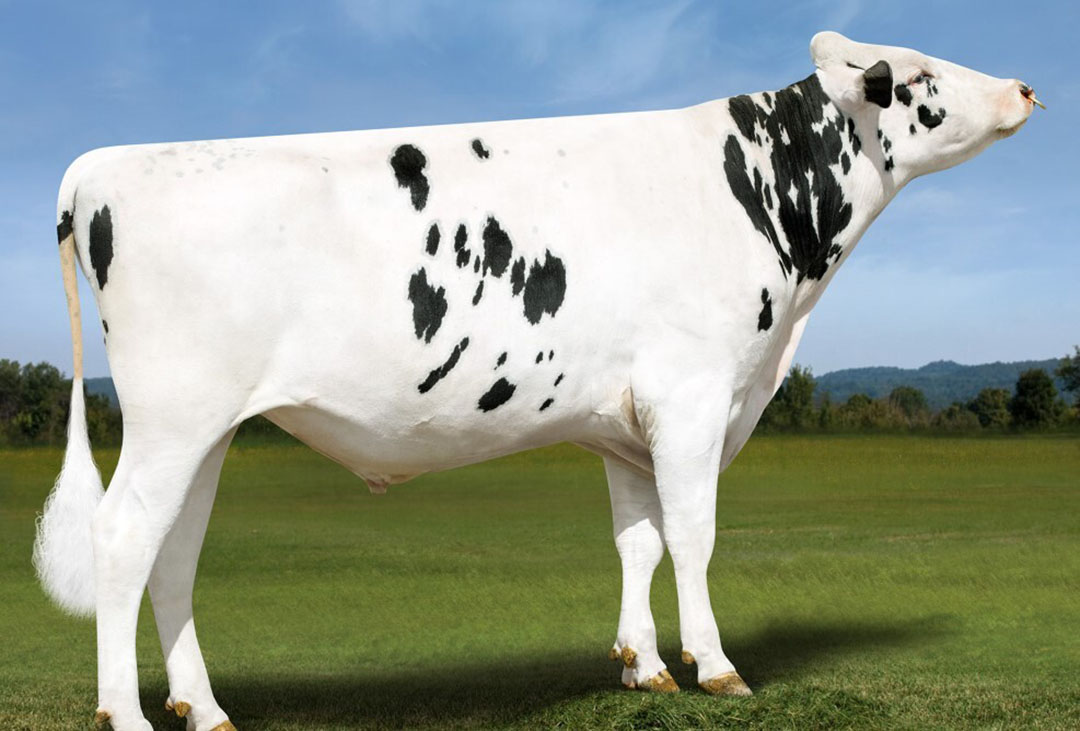
The gene is being used in breeding programmes in many countries, but it’s hard to pin down the extent of use anywhere. In the US, Rodriguez says there is limited data available, but due to climate change, she believes dairy producers are becoming more aware of the benefits of the slick coat, and that the use of this gene is increasing, especially in states that are hot and humid.
The gene may have been introduced into the US, says Rodriguez, in the mid-1980s in Florida when the Holsteins were inseminated with Senepol semen at a farm operation called Pine Valley Dairy. (FutureCow has been offering slick genetics since 2019 through 2 sires, one with genetics from the native Criollo Cattle of Puerto Rico.)
Rodriguez adds, “According to Olson and others, in 2020, the slick animals at the University of Florida, which are registered with the Holstein Association, derive from the animals obtained from this crossbreeding work. The offspring (slick-haired Holstein) obtained have been reported to carry lower vaginal temperatures and lower respiration rates than wild-type Holstein cows.”
Join 13,000+ subscribers
Subscribe to our newsletter to stay updated about all the need-to-know content in the dairy sector, two times a week.




